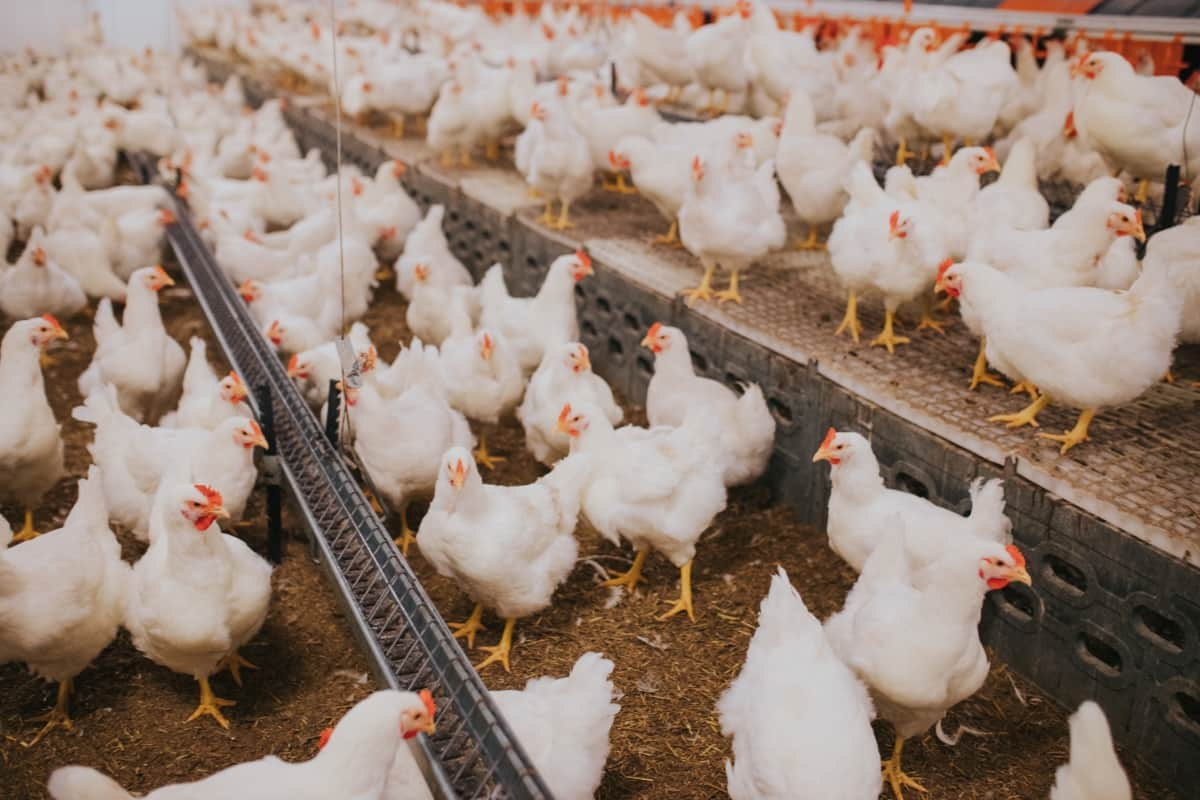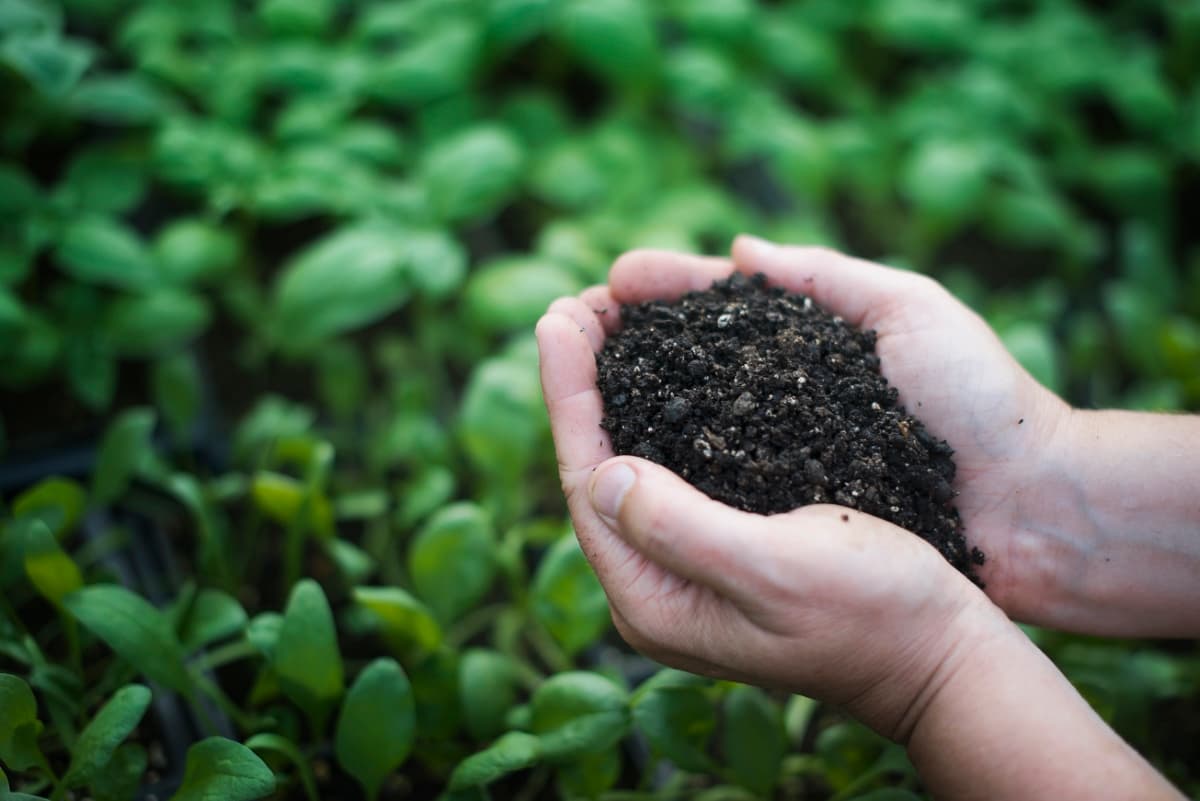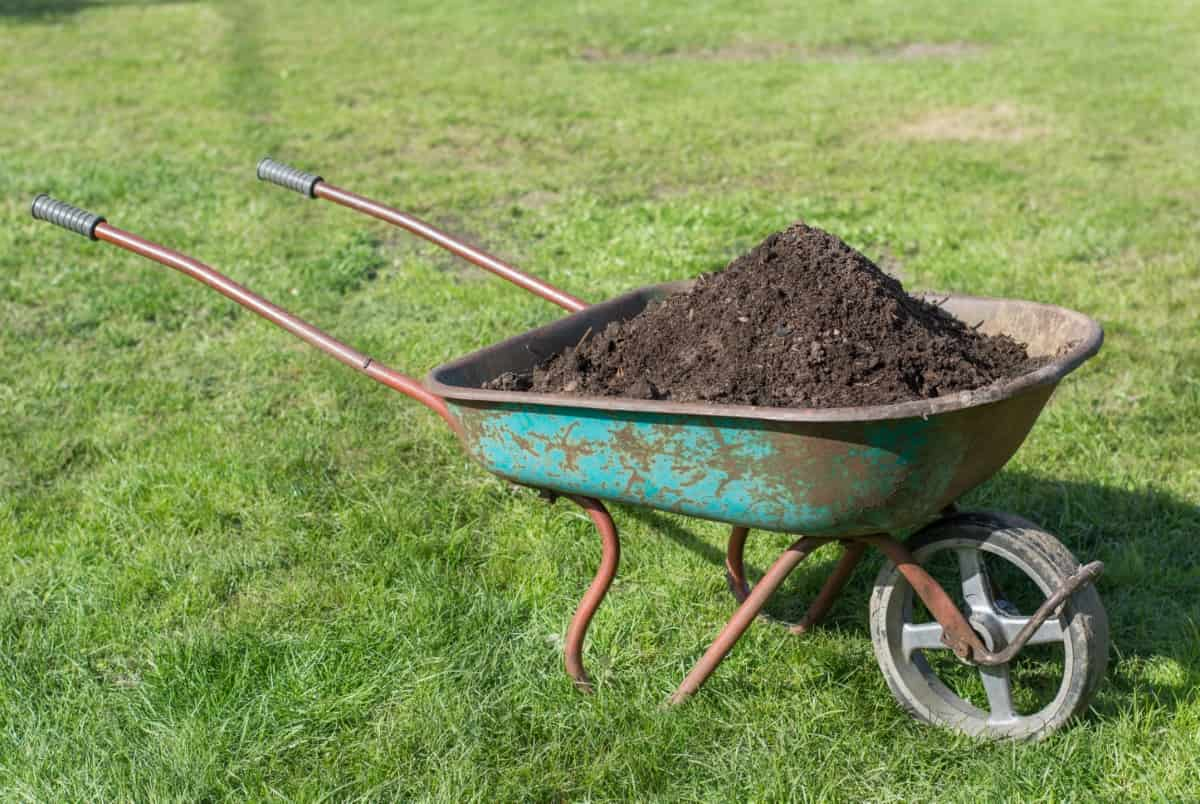Composting chicken manure is an effective strategy for recycling nutrients while managing potential environmental risks associated with poultry production. Here we learn how to compost chicken manure efficiently, focusing on methods that yield results fast, such as hot composting chicken manure and composting chicken manure in a tumbler.

We’ll also touch on the process of mixing chicken manure with soil, and we’ll identify what plants benefit from chicken manure. Let’s explore the entire process in detail, from how to compost chicken manure to the resulting benefits for your garden.
How to Compost Chicken Manure
Step-By-Step Guide
First, it’s essential to know how to compost chicken manure quickly, as this process allows for a quicker return on the investment of effort and resources. Before you begin, gather fresh chicken manure, carbon-rich materials like straw or wood chips, and a compost bin or a tumbler for the process.
Gather the Manure: The first step in how to compost chicken manure is to gather it. This sounds simple, but collecting the manure and bedding material promptly is essential, as fresh chicken manure has the highest nutrient content. The bedding, often straw or wood chips, also plays a crucial role in composting, providing the necessary carbon.
Prepare the Compost Pile: Next, start building your compost pile. A good rule of thumb is to use a ratio of 2:1 carbon-rich material to chicken manure. The carbon-rich material, often straw or wood chips, helps balance the high nitrogen content of the chicken manure, making the composting process more efficient.
Monitor the Pile: The next step in composting chicken manure fast involves carefully monitoring the compost pile. This means regularly checking the temperature of the pile and turning it frequently. Ideally, the compost pile should maintain a temperature between 130 and 150 degrees Fahrenheit. This high temperature, known as hot composting, is crucial for killing pathogens in the manure and speeding up the composting process.
How to Compost Chicken Manure in 18 Days with Hot Composting
One method for accelerating the composting process is hot composting chicken manure. This approach uses a specific ratio of green (nitrogen-rich) to brown (carbon-rich) materials, frequent turning, and careful moisture and temperature control to finish composting in as little as 18 days.
For hot composting, prepare your pile as before, but pay close attention to the balance of materials and the pile’s condition. Regular turning — once every one or two days — is critical in this method, as it helps maintain a consistent internal temperature and provides oxygen to the composting organisms. Hot composting chicken manure can produce rich, dark compost in less than three weeks if all goes well.
How to Compost Chicken Manure in a Tumbler
Composting chicken manure in a tumbler is another popular and efficient method. This system is particularly useful for small-scale poultry keepers who might not produce enough manure for a full-sized compost pile. The composting process is contained and often faster in a tumbler, thanks to the easy aeration achieved by turning the tumbler.
In case you missed it: Benefits of Apple Cider Vinegar for Chickens: Preparation, Dilution Rate, and Giving Procedure

To compost chicken manure in a tumbler, fill it with a balanced mix of manure and carbon-rich materials, then rotate it once or twice a day. Proper humidity and temperature are vital, just like in other techniques. However, a tumbler can make this easier, as it typically comes with a sealed, controllable environment. This method can deliver finished compost in a few weeks, similar to hot composting.
How to Mix Chicken Manure with Soil
After composting the chicken manure, the next step is learning how to mix chicken manure with soil. This process ensures your garden or crops benefit from the composted manure’s nutrients. To do this, add compost to the soil at a ratio of up to 1:3, compost to the soil. However, the actual ratio can depend on the soil quality and the plants’ nutritional requirements. After you’ve spread the compost, mix a spade or tiller into the top six to eight inches of soil. This helps the compost nutrients spread more evenly and gives plant roots better access.
What Plants Benefit from Chicken Manure
The benefits of composted chicken manure extend to a wide variety of plants. It provides a rich source of nitrogen, which is essential for leafy growth, making it particularly beneficial for plants like lettuce, spinach, and cabbage. In addition, the phosphorus in chicken manure aids in root development, benefiting crops like carrots and potatoes.
Fruit-bearing plants, like tomatoes, peppers, and cucumbers, also benefit from the potassium in chicken manure, which supports fruit and flower development. Similarly, the added organic matter improves soil structure, water retention, and overall soil health, benefiting almost all garden plants.
Balancing Carbon and Nitrogen Ratios
Ensuring the right balance between carbon and nitrogen in your compost pile is crucial. Chicken manure is very high in nitrogen, so it’s essential to balance this with sufficient carbon-rich materials like straw or dried leaves. As a rule of thumb, aim for a ratio of approximately 25-30:1, carbon to nitrogen. This balance supports an optimal composting process and prevents the production of foul odors. If your compost pile smells bad, it’s often a sign that you must add more carbon-rich materials.
Maintaining Moisture Levels
Moisture is another critical factor in the composting process. Keep your compost pile moist like a squeezed sponge. If it’s too dry, decomposition will slow down because the microorganisms that break down the organic material need moisture to survive and multiply. Conversely, if the pile is too wet, it can become waterlogged and anaerobic, slowing the composting process and causing foul odors. Regularly check your compost pile and adjust the moisture level as necessary, adding water if it’s too dry or drier carbon material if it’s too wet.
In case you missed it: Benefits of Poultry Manure Fertilizer in Agriculture: Uses, When and How to Apply

Conclusion
In this comprehensive step-by-step process guide, we’ve covered how to compost chicken manure quickly using hot composting methods and a tumbler system. We’ve also addressed how to mix composted chicken manure with soil and what plants benefit from this nutrient-rich compost. By effectively composting chicken manure, you’ll reduce waste and potential environmental impact and enrich your garden, providing your plants with a potent, natural fertilizer. It’s a win-win for both gardeners and the environment.
- Feed Your Flock for Less: Top 10 Tips to Save on Chicken Feed
- Ultimate Guide to Ossabaw Island Hog: Breeding, Raising, Diet, and Care
- Hatching Answers: The Top 10 Reasons Your Chickens Aren’t Laying Eggs
- Eggs and Economics: Breaking Down the Cost of Raising Backyard Chickens
- Defend Your Greens: Proven Methods to Keep Iguanas Out of Your Garden
- Ultimate Guide to Cinnamon Queen Chicken: A Comprehensive Guide for Beginners
- Ultimate Guide to California Tan Chicken: Breeding, Raising, Diet, Egg-Production and Care
- Ultimate Guide to Marsh Daisy Chicken: Breeding, Raising, Diet, and Care
- 10 Types of Chicken Farming Businesses You Can Start for Profits